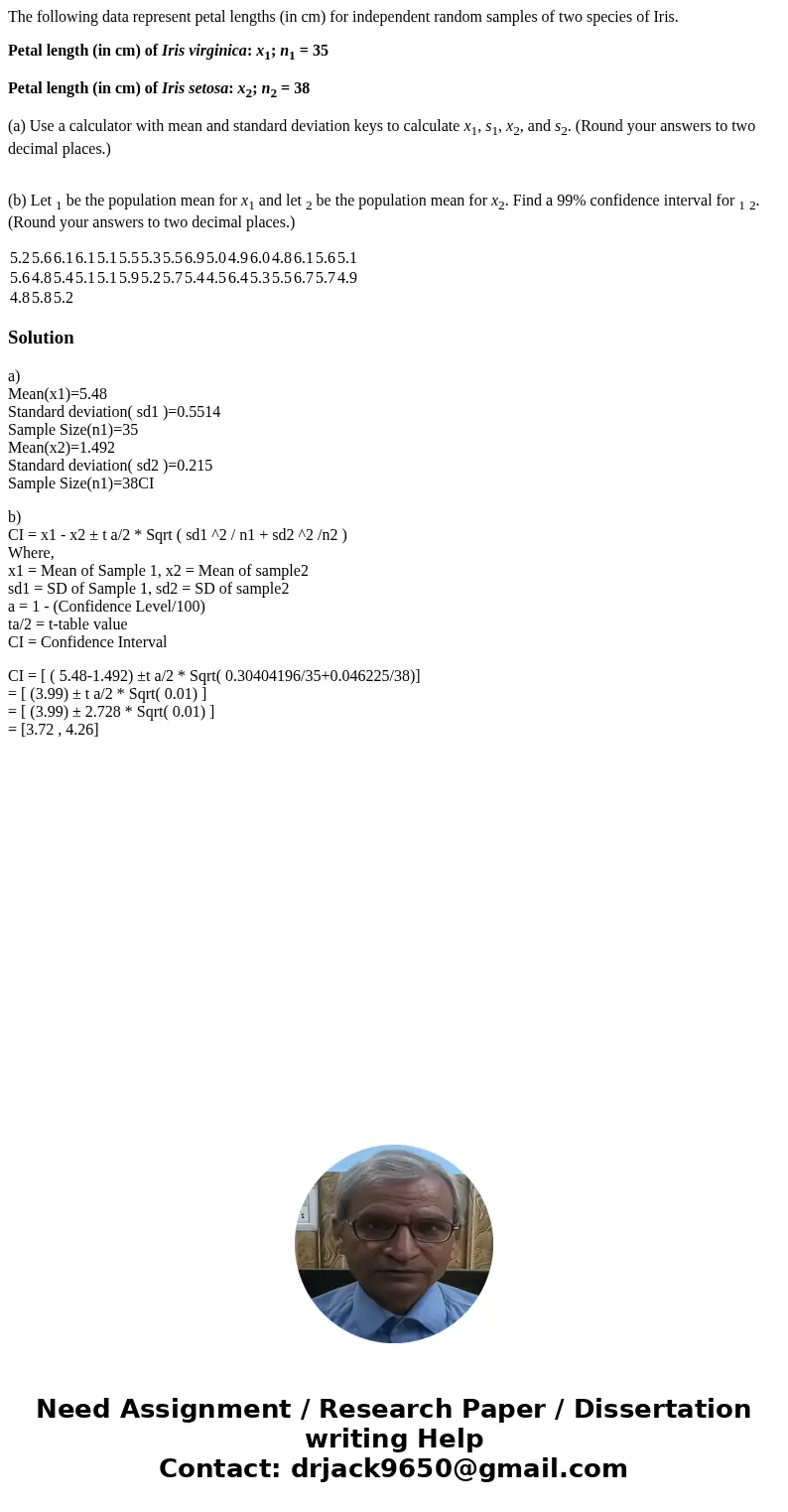The following data represent petal lengths in cm for indepen
The following data represent petal lengths (in cm) for independent random samples of two species of Iris.
Petal length (in cm) of Iris virginica: x1; n1 = 35
Petal length (in cm) of Iris setosa: x2; n2 = 38
(a) Use a calculator with mean and standard deviation keys to calculate x1, s1, x2, and s2. (Round your answers to two decimal places.)
(b) Let 1 be the population mean for x1 and let 2 be the population mean for x2. Find a 99% confidence interval for 1 2. (Round your answers to two decimal places.)
| 5.2 | 5.6 | 6.1 | 6.1 | 5.1 | 5.5 | 5.3 | 5.5 | 6.9 | 5.0 | 4.9 | 6.0 | 4.8 | 6.1 | 5.6 | 5.1 |
| 5.6 | 4.8 | 5.4 | 5.1 | 5.1 | 5.9 | 5.2 | 5.7 | 5.4 | 4.5 | 6.4 | 5.3 | 5.5 | 6.7 | 5.7 | 4.9 |
| 4.8 | 5.8 | 5.2 |
Solution
a)
Mean(x1)=5.48
Standard deviation( sd1 )=0.5514
Sample Size(n1)=35
Mean(x2)=1.492
Standard deviation( sd2 )=0.215
Sample Size(n1)=38CI
b)
CI = x1 - x2 ± t a/2 * Sqrt ( sd1 ^2 / n1 + sd2 ^2 /n2 )
Where,
x1 = Mean of Sample 1, x2 = Mean of sample2
sd1 = SD of Sample 1, sd2 = SD of sample2
a = 1 - (Confidence Level/100)
ta/2 = t-table value
CI = Confidence Interval
CI = [ ( 5.48-1.492) ±t a/2 * Sqrt( 0.30404196/35+0.046225/38)]
= [ (3.99) ± t a/2 * Sqrt( 0.01) ]
= [ (3.99) ± 2.728 * Sqrt( 0.01) ]
= [3.72 , 4.26]

 Homework Sourse
Homework Sourse